
The Rotax 582 is a 48 kW (64 hp) two-stroke, two-cylinder, rotary intake valve, oil-in-fuel or oil injection pump, liquid-cooled, gear reduction-drive aircraft engine manufactured by BRP-Rotax GmbH & Co. KG. It is for use in non-certified aircraft operating in day visual flight rules.
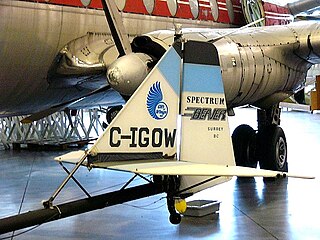
Spectrum Aircraft was a Canadian ultralight aircraft manufacturer that commenced operations in 1983 and went out of business in 1992. The company was known for its Beaver ultralight design, which remains in production by successor companies in the 21st century.
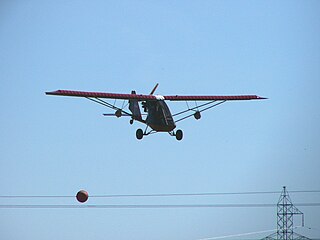
The Birdman Chinook is a family of single and two-place, pusher configuration, high-wing ultralight aircraft that was first flown on 12 December 1982 and produced by Birdman Enterprises of Edmonton, Alberta, Canada, starting in 1983.
The Avid Champion is an American single-seat, high-wing ultralight aircraft that was produced starting in 1998 as a kit by Avid Aircraft of Caldwell, Idaho, later Ennis, Montana.
The Airdrome Dream Classic is a minimalist, high wing, single seat, single engine ultralight aircraft inspired by the 1908 Santos-Dumont Demoiselle and produced in kit form by Airdrome Aeroplanes of Holden, Missouri.

The Flightstar is a large family of single and two-seat, high wing, single engined kit aircraft that was produced by Flightstar Sportplanes of South Woodstock, Connecticut. In 2009 the rights, tooling and parts inventory were sold to Yuneec International of China when Flightstar Sportplanes' business was wound up.

The Fisher FP-404 is a Canadian single-seat, conventional landing gear, single-engined biplane kit aircraft designed for construction by amateur builders. Fisher Flying Products was originally based in Edgeley, North Dakota, USA but the company is now located in Woodbridge, Ontario, Canada.
The Fisher FP-606 Sky Baby is a Canadian single-seat, conventional landing gear or tricycle landing gear-equipped, single-engined, high-wing monoplane kit aircraft designed for construction by amateur builders. Fisher Flying Products was originally based in Edgeley, North Dakota, United States, but the company is now located in Woodbridge, Ontario, Canada.
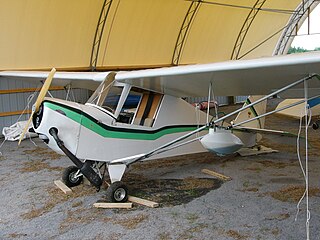
The Fisher FP-101 is an American single-seat, high-wing, conventional landing gear, tractor configuration single engine ultralight aircraft that was available in kit form from Lite Flite of South Webster, Ohio and later Fisher Flying Products of Edgeley, North Dakota.
The Freebird II is a family of American side-by-side two-seat, high wing, tricycle gear, pusher configuration single engined kit aircraft originally designed for construction by amateur builders by the Freebird Airplane Company of Marshville, North Carolina, and later Pro Sport Aviation of Wingate, North Carolina.
The InterPlane Griffon is a single seat, high wing, single engine, pusher configuration, tricycle gear ultralight aircraft, that was produced in kit form from InterPlane Aircraft of Zbraslavice, Czech Republic.

The InterPlane Skyboy is a two-seat, side-by-side, high wing, single engine, pusher configuration ultralight aircraft that was manufactured as a completed aircraft by InterPlane Aircraft of Zbraslavice, Czech Republic.

The CGS Hawk is a family of high wing, strut-braced, pusher configuration, single and two-seats-in-tandem ultralight aircraft, designed by Chuck Slusarczyk and manufactured by CGS Aviation.
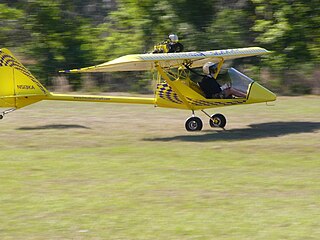
The Kolb Firestar is a family of American open cockpit, high wing, pusher configuration, conventional landing gear-equipped ultralight aircraft that was produced in kit form by Kolb Aircraft of Phoenixville, Pennsylvania and intended for amateur construction.

The Rans S-12 Airaile is a family of related American single-engined, pusher configuration, high-wing monoplanes designed by Randy Schlitter and manufactured by Rans Inc. The aircraft are available in kit form for amateur construction.

The Joplin Tundra is a family of Canadian, high-wing, strut-braced, pusher configuration ultralight aircraft that was originally produced by Back Forty Developments of Campbellford, Ontario, Canada and later by Joplin Light Aircraft of Joplin, Missouri and Laron Aviation of Borger, Texas for amateur construction. The aircraft is out of production.
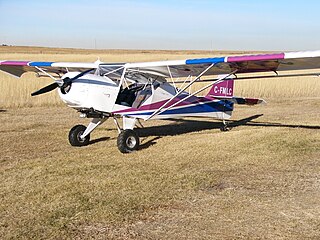
The Denney Kitfox is a series of small side-by-side, two-seat, high-wing, single engine kit aircraft, designed and originally manufactured by Dan Denney and his company Denney Aerocraft of Boise, Idaho. The aircraft is amateur-built and not type-certified. Over 4500 kits have been delivered in 42 different countries.
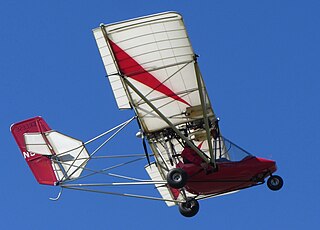
The M-Squared Breese is a large family of high-wing, strut-braced, pusher configuration, tricycle gear, ultralight aircraft produced by M-Squared Aircraft of St. Elmo, Alabama in kit form, for amateur construction.
The Mariner Aircraft Mariner is an American ultralight amphibious flying boat that was designed by Larry Seifert and produced by Mariner Aircraft, starting in 1989. The aircraft was supplied as a kit for amateur construction.

The Freedom Lite SS-11 Skywatch is a Canadian ultralight aircraft that was produced by Freedom Lite of Walton, Ontario and later by Legend Lite of New Hamburg, Ontario, introduced in 1996. When it was available the aircraft was supplied as a complete ready-to-fly-aircraft, or as a kit for amateur construction.



















